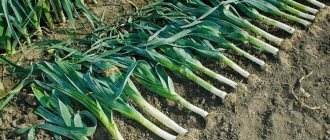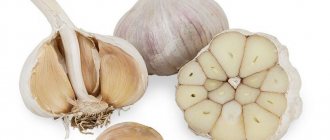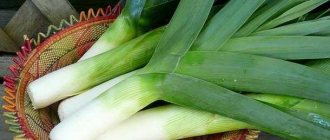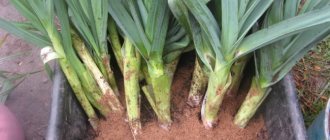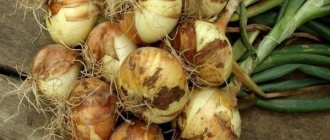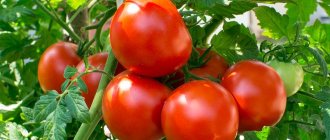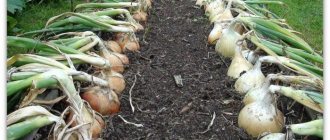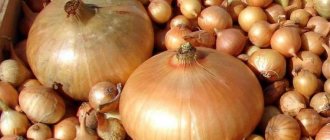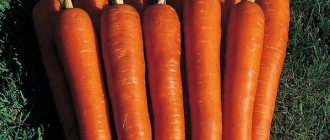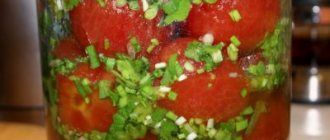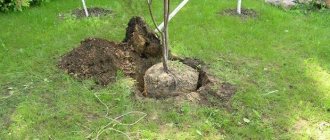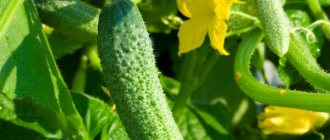Timing for harvesting onions from the garden for storage in 2020
In 2021, in July and August, the periods of the waxing and waning phases of the Moon fall on the following dates:
| Months | Growing | Descending | Full | New | Dangerous days |
| July | 1-4, 21-31 | 6-19 | 5 | 20 | 4, 6, 19, 21 |
| August | 1-2, 20-31 | 4-18 | 3 | 19 | 2, 4, 18, 20 |
| September | 1, 18-30 | 3-16 | 2 | 17 | 2, 16, 18 |
The days before and after the Full Moon and New Moon are considered dangerous. Astrologers do not recommend harvesting at this time, as changes occur in the plants. This is the turning point when their vital energy reaches its highest point and then goes to the roots or rises to the top. Green spaces weaken and become more susceptible to stress and injury. Onions collected on such days are poorly preserved and quickly lose their beneficial taste qualities.
In Ukraine and Belarus, due to the warm climate, the collection of onion plants continues until mid-September. There is a main condition when ripening a crop: you must not allow the onion to overripe in the garden, otherwise it will become damp and sprout new roots. Such defects reduce the shelf life of the heads; they rot and lose their presentation.
Favorable days for harvesting onions according to the Lunar calendar in 2020
| Kinds | The nutritional value | Lunar phase | Days |
| Onion sets | Turnip, sowing head | Descending | July 7-19, August 5-17, September 3-16 |
| Leek (per leaf) | Top of the crop | Growing | 22-31.07; 1, 21-31.08;1, 19-30.09 |
| Collecting seeds | — | Same | Same dates |
The duration of the plant's growing season is 70-90 days, the earliest varieties ripen on the 65th day, the later ones are ready for harvesting after 85-90 days.
How to prepare onions for storage
In order to prepare onions for long-term storage, they must be properly dried, sorted and the feathers trimmed in time.
How to dry onions after harvesting
After harvesting, the onions must be dried. To do this, take it out into the sun every day for 2-3 weeks, not forgetting to turn it over every now and then.
At night, the onions must be brought into a warm, dry room so that the dew that falls outside in the morning does not harm the bulbs.
Some dry onions directly in their garden beds, and those who do not have this opportunity use a dry, ventilated room for this. There are fans of extreme methods who dry onions in the oven (turning it on and off every now and then) at a minimum temperature. However, in this case there is a risk of destroying the entire crop, because sometimes the onion gets too dry and the covering scales become hopelessly cracked.
How to sort and trim onions for storage
In order for onions to be stored well, it is important to find all damaged onions and immediately use them in your culinary masterpieces. If you leave them in the company of your friends, they can cause rot. During storage, onions are most often affected by neck rot, bottom rot, bacteriosis and blue mold.
- 4 dangerous diseases of onions during storage
Diseases that can destroy the entire onion crop you have grown in a month or two.
Usually the onion is trimmed when it has dried out a little, and then dried. In this case, they leave a neck 4-6 cm long. But if you plan to weave onion braids, then you should leave a stem about 15 cm long. It is not recommended to trim the feather immediately after harvesting, because at this moment, the cut site is vulnerable to the penetration of pathogens.
If you have grown a leek crop, do not forget to shorten the roots to 1-2 cm, and the feather to 2/3 of the length.
In a well-dried onion, the upper scales easily fly off the bulb, and the neck becomes much thinner.
How to determine the ripeness of onions
There are three main ways to determine the full degree of maturity of onions:
- You can recognize the ripeness of a vegetable by external signs by studying the condition of the tops and onions.
- The mathematical method will help when the variety and timing of its ripening are precisely known.
- The lunar calendar will tell you the exact date of any work in the garden.
In any of these cases, the weather plays a decisive role. If the days are cold and rainy, the harvest may be delayed significantly.
External signs of maturity
You can tell that onions are ripe by the following external signs:
- the tops begin to turn yellow, dry out and fall on the bed;
- new feathers do not appear;
- the neck of the onion becomes thinner and dries out;
- The upper scales of the bulb are easily removed and rustle.
A ripe onion tastes juicy, with well-formed plates that emit a pleasant, characteristic aroma.
Optimal harvest time
You should dig up the onions when they are ripe, without being tied to a specific date. Planting is carried out at different times not only in the Moscow region, Stavropol region or beyond the Urals, but also in neighbors whose gardens are separated by boundaries.
It is recommended to plant onions on turnips when the bird cherry blossoms. But at this time it often rains, city residents do not always have the opportunity to open the summer season. Villagers have a lot of other work; if crops are not a priority, onions are placed in the beds earlier or later - when the owners have time.
Bulb
From the moment the turnip is planted until the harvest, it takes
| Varieties | Ripening time, months |
| early | until 3 |
| mid-season | 3-4 |
| late | more than 4 |
Important! When to harvest onions in the Urals, Siberia, and other regions depends on the weather. If there is a lot of rain and not enough sun, the turnip will take longer to ripen.
In central Russia and further north, mid-season varieties are produced for winter storage, which can be harvested in August. The early ones planted before winter do not last long; the late ones do not have time to ripen in most of the territory.
If you rely on the lunar calendar, you dig up winter onions and spring onions on the waning moon. But gardeners who take the phases of the night light too seriously when harvesting are at risk. It can “advise,” for example, to harvest onions in the Moscow region when it rains, and it’s even impossible to go out to the garden.
Leek
It does not form a turnip; it is grown in a two-year culture. There are varieties with a vegetative period of up to 140 days - planted in the spring, they ripen in the fall. Both varieties remain green until late autumn.
Gardeners growing the crop for the first time do not know how to understand that it is time to harvest onions. It is recommended to dig up the crop just before frost so that the stem becomes thicker.
shallot
The growing season of heirloom onions is shorter than that of onions. It is harvested approximately at the same time as the onions planted in the fall - in July. If you choose the right time, the crop will be stored well.
How to properly dig onions from the beds
As soon as the timing of onion harvesting has been determined, preparations begin. Three weeks before the calculated date, stop watering and fertilizing. Water leads to the appearance of new roots and rotting of root crops.
The cleaning process itself must be carried out following certain rules:
- the day should be sunny and dry (it is advisable to study the weather forecast and choose a time when no rain is expected for 12 days);
- if the soil is soft, then you can pull out the bulbs by hand, but it is best to use a pitchfork or shovel;
- Use a pitchfork to carefully dig up the area around the head, and then pull it out with your hands;
- You need to shake off the adhering dirt from the bulbs (do this carefully so as not to cause damage);
- The onion should be left to dry together with the tops (during the drying process, the tops will saturate the onion with nutrients);
- The dug crop is distributed in one layer on a flat surface and turned periodically.
Harvesting
About 2 weeks before digging the onions, stop watering the garden. Choose a hot, dry day and begin the operation.
How to speed up maturation
The weather is usually good when winter onions are harvested. Spring crops often have to be removed from wet soil. Therefore, it is recommended to study the long-term forecast, if necessary, to accelerate the ripening of turnips.
You cannot trample, mow, or break feathers - an infection will get into the wounds and the onion will begin to rot. The roots continue to work normally, stimulating the growth of green mass.
In the second half of summer, a mass disease of the crop with peronosporosis begins, from which winter varieties are abandoned. The development of infection is favored by damp weather, high temperatures during the day, and low temperatures at night. There are three options:
- suffer crop loss due to disease;
- use drugs of chemical origin;
- bring onion harvesting closer.
Sometimes gardeners water the garden bed with a salt solution. This causes rapid drying out of the aboveground part and causes the turnip to become covered with dense protective scales. But the yield decreases - during normal ripening, nutrients flow from the leaves to the head, increasing the volume by 20%.
Ways to speed up the ripening of turnips:
- In large areas, use a shovel or other tool to trim the roots at a distance of about 5 cm from the bottom. They stop feeding the aerial part, the neck becomes thinner, the outer scales become coarser, and form a protective cover.
- On sand-rich soils, carefully take the turnip at the root collar and pull it up. The sucking processes break off and feeding stops.
- They rake away the earth, leaving most of the turnip on the surface. The operation is labor-intensive, requires caution, and is carried out in small beds.
How to properly dig up crops
The heads are removed by hand only on loose sandy soils. The feathers are taken with your hand near the root neck, pulled up - the turnip should come out easily. At the slightest resistance, use garden tools - a pitchfork, a shovel. Place the teeth or cloth 10 cm from the head and dig it out. You can’t get any closer - you can damage the scales.
In good weather, shake off the soil from the turnip and lay it on the garden bed to dry. You cannot hit the heads against each other - the damage is invisible to the naked eye, but keeping quality is reduced. Towards evening, transfer it under a canopy or to a clean, dry room with good air ventilation.
Important! In the Urals, when onions are harvested from the garden, it often rains. You cannot leave the harvest in the garden.
Onion
The onion called “Turnip” is suitable for all weather conditions; it is even grown in Transbaikalia. Many gardeners immediately fell in love with it, because its fruits are so large that they do not fit in the hand. At the moment, any summer resident can grow it, however, not everyone will be able to grow such an onion, because a lot of work needs to be done for the vegetable to yield a harvest. The planting technology is complex, but we will briefly tell you about it.
You buy small sets for planting in any specialized store, then calculate the planting time, as already mentioned - this is the beginning of May. Rake the dug up area of the bed with a rake, leveling the surface. Next, make small depressions about 2 cm deep for planting material, the distance between them should be at least 10-15 cm.
Now take the ash, pour it with water so that you get a porridge with a consistency similar to semolina. Add a teaspoon of kerosene to it and stir. Wear gloves and take the set by the tail, dip the onion in the resulting mixture and transfer it to the hole. There is no need to bury anything, just water the onions twice a week during the growing season. Next, feed.
Harvesting and storing onions is slightly different from other onions. First, the entire harvest is dried in the sun for about two to three weeks, then the tails and roots are cut off, poured into a container convenient for storage and sent to a cellar or room to wait for winter. This variety spoils much less often than other types, so gardeners try to grow Turnips from year to year.
In conclusion, I would like to say that if you are growing onions in your garden for the first time, then read the article about harvesting and storing the crop, because it will be a shame to grow decent fruits and not know how to preserve the harvest. In general, we told you how to dig and store onions at home, we hope you find our information useful.
Storage secrets from an experienced summer resident
It is imperative to observe the storage conditions for onions. Only whole, firm onions are suitable for storage. They can be placed in wicker baskets, wooden or plastic boxes with holes, or nets. You can simply collect several heads together and tie them into a bundle with rope, hanging them from the ceiling.
You can weave braids from the tops. In this case, there is no need to cut off the leaves after drying; they are simply intertwined together. All bulbs are well ventilated and rarely rot.
It is important to know at what temperature onions should be stored throughout the winter. It is best to store in a dark, cool place (for example, in a basement or cellar), where the air temperature is from 0 to +5. Air humidity is no more than 80%. If the air humidity is higher, the risk of rotting and sprouting of the crop increases. The room must have good ventilation. If onions are stored at home, then they should be kept away from heating devices, with good air flow.
Some experienced gardeners know their secrets on how to properly store the harvest. To prevent the rotting process, sprinkle the heads with chalk. Only such onions can no longer be planted in the ground.
In July, onions are already dug up in some places and put away for winter storage. In general, the harvesting period for this crop is quite extended and depends on the variety, growing region, and weather conditions. The surest way to correctly determine the timing is to be guided by the appearance of the plants. It is important not only to collect the harvest correctly and in a timely manner, but also to preserve it. Let's take a closer look at all the details of this process.
When to harvest onion sets
The ripening time for such onions occurs 85–95 days after planting, usually the end of July - beginning of August, adjusted for weather conditions. Based on this, you can calculate the approximate time when you should collect onions from the garden. Here you can focus on the condition of the feather: it should turn yellow and dry out in places.
Then you can start harvesting onion sets; agricultural technology is not much different from that used for onion sets. The first stage of drying is also carried out in the garden bed, if the weather allows this, then the onions are stored in a well-ventilated room with normal humidity.
How to collect seeds?
It is best to collect seeds for planting vegetables for next year from your garden. After harvesting, bulbs are selected for seeds, which are highly dense and have a diameter of about 10 cm. Selected bulbs must be stored warm for three months. During this time they will become covered with a large number of scales.
Planting bulbs for seeds begins earlier, in late April, since seed formation takes longer. Before placing in the holes, cut the neck down to juicy scales so that seedlings appear faster. There should be a distance of about 25 cm between the rows, and a distance of at least 15 cm between the bulbs in the row.
At the end of summer (last days of August) the seeds ripen - nigella. The onion leaves begin to turn yellow and dry out.
It is imperative to collect the seeds correctly and ensure proper storage:
- Seed collection begins when the boxes begin to burst.
- The arrows are cut, collected in bunches and hung under a canopy until final ripening.
- Under the hanging arrows, you definitely need to lay paper on which the ripened seeds will fall.
- They grind the inflorescences themselves to get the remaining seeds.
- After this, it is recommended to select high-quality planting material. Place the seeds in a glass of water. Those that float to the surface are thrown away.
- The remaining good seeds are distributed on a fabric surface and left to dry.
The collected seeds are stored in a fabric bag in a dry, dark place. After sowing the nigella seeds, onion sets grow. It matures in approximately 85–90 days. The collection can last from the end of July until the beginning of September. But you shouldn’t leave it until frost and heavy rains.
In order for the sets to retain all the beneficial properties, it is necessary to harvest the crop on time. The fact that the seedlings are ripe can be recognized by external signs: the leaves become yellow, dry and limp, the neck is soft and dry. There is no need to wait for the leaves to fall on the beds. Such a crop does not store well, and after planting the next year it will only form arrows.
They begin to dig up crops in dry weather. You can pull it out by hand; there is also a method where you pull out the onion with a pitchfork.
Signs of maturation
Following the Lunar calendar or calculating arithmetically, you still need to pay attention to the external signs of the vegetable.
• The first thing that indicates the onion is ripe is the dried feathers that are already lying on the ground. In some cases, the feathers may still be greenish in color, but already very weak, having fallen to the ground. If the summer was rainy and cold, then waiting for the feathers to completely dry out will not be easy. • The second sign is a dried out neck of the bulb. If, after pressing it, you feel that it is completely dry, the vegetable is ready for harvest. • The third is husks sticking out of the ground, dry and flaky.
How to speed up the ripening of onions and prepare them for harvesting
If you understand that the optimal harvest time is approaching, but the onions are not yet showing signs of ripening or rains are expected (you cannot harvest during them), then you can apply some stimulating measures. To speed up the ripening of onions, you can perform the following manipulations:
- Watering stops 2 weeks before harvesting . You need to stop watering even if the weather is dry.
- You can slightly undermine the suction roots so that the bulb begins to feed from the leaf mass. Gently grab the tops and tug lightly, as if you want to pull them out of the ground, while they should remain in the ground until fully ripe. For the same purpose, you can lift the onion with a pitchfork. This manipulation should be done very carefully on clay soil (the stem can be torn off) or sandy soil (the bulb can be pulled out completely).
- If the soil in the garden bed is dry and soft, then you can dig up each onion a little to expose its upper part . Thanks to this exposure, the covering scales will begin to ripen more intensively, which means that ripening will be faster.
Advice! If it begins to rain shortly before harvest, it is recommended to protect the plantings. To do this, you can place arcs in the garden bed and lay a film on them. At the same time, you should not cover the sides with film: the places should be open for ventilation.
This is especially important if you practice the 3rd method (exposing the bulbs in the ground): if you do not protect them from precipitation, they will quickly begin to rot. Also, with the 3rd method, you should especially not water the garden bed.
Important! It is not recommended to trim the feathers to stimulate ripening, otherwise you will deprive the bulbs of nutrients.
Harvesting and storing other types of onions
The collection and storage of each type of onion has its own characteristics.
Sevok
Sevok is the “youth” stage of onions. It takes 90-100 days from sowing the seeds to ripening. The collection of seedlings usually occurs at the end of August.
The bulbs are small, so harvesting requires delicacy. They dig up the soil with a pitchfork, carefully remove the onion sets from the garden bed and clear the soil. Dry for at least two weeks under a canopy and trim. Store at temperatures up to 20°C in a dry, dark place.
shallot
It has a sweet taste and tender onion. It ripens earlier than onions, and must be harvested before the end of July. Well-dried shallots can be stored for up to six months in boxes, baskets or bundles.
Leek
This type of onion is cold-resistant and feels great in open ground until the end of September. Leeks are harvested for storage before frost. Undamaged plants with a strong bottom are selected, the tops are shortened to 25 cm.
You can store leeks until mid-winter in the cellar - in a box with wet sand. A layer of sand is poured onto the bottom of the container. Plants are placed upright and sprinkled with sand so that only leaves remain on the surface.
How to dry vegetables
After harvesting, onions need to be dried well so that they can be stored in an apartment or cellar for a long time. Drying onions should begin by peeling the top leaves of the husk, then it is worth cutting off the dry tops at a distance of 10 cm from the head, this will prevent viruses and other diseases from entering the inside of the bulbs. Next, cut off the roots, not reaching the onion 5 cm. Now you can safely spread the onions in one layer in the sun to properly dry the heads. Usually this procedure takes about a week; every other day it is recommended to turn the onions over to another side so that when harvesting the onions for storage, they are well dried on all sides. At night, it is advisable to bring vegetables under a canopy to avoid rain. After the specified time, you can safely collect the dried onions and put them away for long-term storage.
All of these procedures are good to perform in a hot, sunny summer, but, unfortunately, not every region can boast of such a climate and it often rains during the onion digging season. Then, to preserve the harvest, you will need more effort and time. Let's start with the simplest thing, digging out the onion. In principle, this part of the process remains unchanged, collecting onions is just as easy and simple, just dig it up with a shovel and that’s it. Next comes drying the onions. A poorly dried vegetable is dried twice. For the first time, you can dry onions at home in your apartment. Now we’ll tell you how to dry it properly. So, process the bulbs, removing excess dirt, lay them out on a cloth, and turn on the heating or heater, which will help dry the onions over a certain number of days. Next, you need to move the bulbs to the veranda or leave them in the room, but only this time, during drying, the air temperature should not exceed 20 degrees, and the room should be well ventilated. After a couple of weeks, you can remove the onions for storage.
It is important to remember that for storing onions, only dense fruits without visible damage are selected. Slightly spoiled ones should be processed immediately or put in the refrigerator. You can make it even easier by drying the onions in an electric dryer. Storing onions dry and cut is much easier than in the refrigerator. And now we will learn how to dry onions using an electrical appliance. First of all, it is better to use rotten and limp fruits; they are peeled, washed, removed excess moisture with a towel, cut into rings or half rings (whichever is more convenient for you), put on a dryer and turn it on. At what temperature should you dry chopped onions? For onions, 55-65 degrees is enough; drying time varies from 5 to 7 hours. Meanwhile, green onions dry faster and can be put away in a jar after 3 hours. It is recommended to store this product away from direct sunlight. Otherwise, all your efforts will be in vain. For example, in an apartment you can hide jars of onions in the kitchen cabinet; in a private house, a cellar is suitable for storage.
You may be interested in: Dates for planting leeks for seedlings in 2021 throughout Russia Dates for planting onion sets in 2021 for feathers and turnips in different regions of Russia Harvesting onions according to the lunar calendar 2021 in Siberia
Bulb storage rules
There are four main components for proper storage of onions: absence of sunlight in the room, normal stable environmental humidity (room humidity should be within the range of 50–70%), high-quality ventilation and correct temperature conditions.
Onions are stored in cardboard boxes, wicker baskets, plywood boxes - it all depends on the volume and how long the storage of this vegetable is planned. You can also find such an original way of preserving the onion harvest as storing it in stockings, nets, bags or bundles (the feather is not removed, but braided into a braid), which are not stored in containers, but hung.
These methods are good because the onion comes into contact with various surfaces as little as possible, does not deform and does not overheat.
At home, onions can be stored in the refrigerator, on a loggia, balcony, or cool veranda. It is important to remember that onions do not tolerate sudden changes in temperature and hypothermia: the bulbs very quickly lose turgor, their flesh becomes watery, and the smell and taste characteristics deteriorate.
Sets should also be stored in a cool, dark place with constant access to fresh air. Under no circumstances should containers with onions be placed near heaters or radiators.
You can learn more about the features of storing onions at home in the video below.
What is a lunar calendar
Many people know that from the moment of planting onions, after 70-80 days, they can already harvest. So should you believe the lunar calendar and what is it anyway? The Sun and Moon have been influencing everything living on planet Earth for millions of millennia. The Moon is a constant satellite of the Earth, revolving around the Sun. When the gravitational period begins (this is the period of the new moon), all living things are attracted downward. After it comes a period of upward attraction. This is how the most suitable dates for harvesting or planting vegetables are calculated according to the Lunar calendar.
